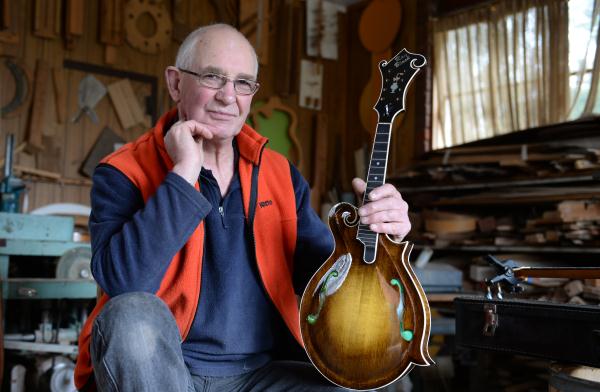
By NOEL MURPHY
MAPLE, red spruce, blackwood, a little ingenuity and a good ear for the sound timber makes when tapped is the secret to making mandolins and banjos, according to Ray Black.
The retired Freshwater Creek farmer, who’s been making instruments for several decades, swears the process is fairly straightforward.
“It’s knowing how the thing should sound at different stages,” he said.
“The wood varies, it’s never exactly the same even if it’s from the same log. It’s how it flexes in your hands, how it sounds when you tap it.
“It’s actually about the sound you have in your head – that’s how I look at it, anyway – so that when you put the top and back together you should have a certain sound at that stage. If it’s not, then you might have to refine the sound by varying the thicknesses.”
An artisan’s arcane nous has carried Ray to the upper echelons of instrument-makers in Australia and overseas, catering for musicians playing bluegrass, old-time, Irish traditional and all other genres of acoustic music.
Ray says his luthier work is really just a hobby but his name’s become a gold standard among musicians who fete his skills from one end of the country to another.
“It’s the sound they’re looking for, that’s the first thing. As a muso, the number one thing is the sound, the quality of the tone, the volume.
“A lot of people aren’t sure of what they’re looking for at first…but when they play a handmade they say, ‘Wow’, because it’s so different.
“The difference is the playability and the ease of getting the sound of their instrument.”






